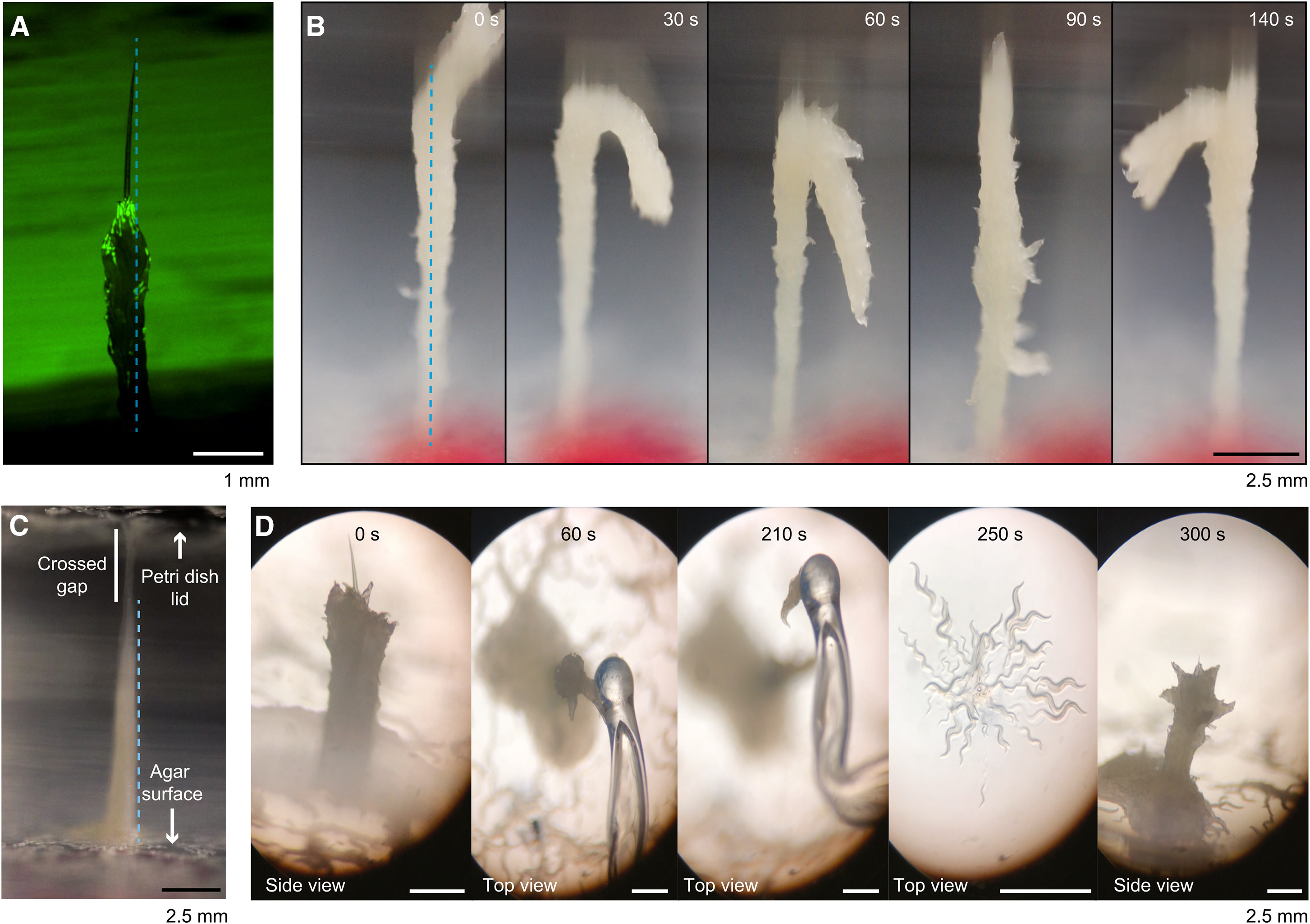For years, scientists have watched nematodes build massive superorganisms in the form of writhing towers. But, they’ve only seen it happen in the lab. Now, though, researchers write that they’ve observed these massive, disturbing towers writhing in the wild for the first time ever.
Previously, researchers believed that the behavior was meant to be an attempt to escape from the rest of the group. However, new images of the writhing towers appear to suggest they’re actually used cooperatively, to benefit many worms instead of just one.
The researchers reported their findings in a report published in Current Biology, writing that these towering superorganisms only existed naturally in their imaginations for the longest of times. Observing the towers also taught researchers quite a bit about how different species of nematode work together.
While watching the towers, the scientists note that while many different species crawled through the worm towers, only one species, a tough larval stage known as a dauer, actually participated in building up the writing masses. This specificity in the construction of the tower points to something more than just random cooperation.

These towers are truly superorganisms, then, and not just piles of writing worm bodies. This discovery also got researchers thinking: could other worms form writhing towers like this, too? To test that hypothesis, they stuck a toothbrush bristle into a food-free agar plate, then unleashed a bunch of roundworms from the species Caenorhabditis elegans into the structure.
Immediately, the worms began to work together and build up a tower. Within two hours, the researchers say the C. elegans had formed a tower using the bristle as its spine. The researchers watched as some worms along the superorganism writhed and acted as exploratory arms. Others acted as bridges between gaps.
To see how the superorganism would respond, the researchers tapped the top of the tower with a glass pick. Almost immediately, the worms began to wriggle and move toward the area. This, they say, shows that these towers are always growing and moving toward stimulus.
It’s an intriguing show of cooperation between the worms, and just one more way that worms continue to astound scientists. It also raises more questions about why these superorganisms form in the first place. Even more interesting, though, is that the roundworms didn’t appear to hold any kind of class system in place. Where the nematodes only relied on the larval stage worms to create the tower, all the roundworms chimed in to help build up the mass.
Researchers will need to dig deeper to see exactly why worms form these writhing superorganisms. Hopefully other species, like the parasitic hairworm, aren’t capable of this same kind of behavior.
The post ‘Superorganisms’ were just seen in the wild for the first time ever appeared first on BGR.




